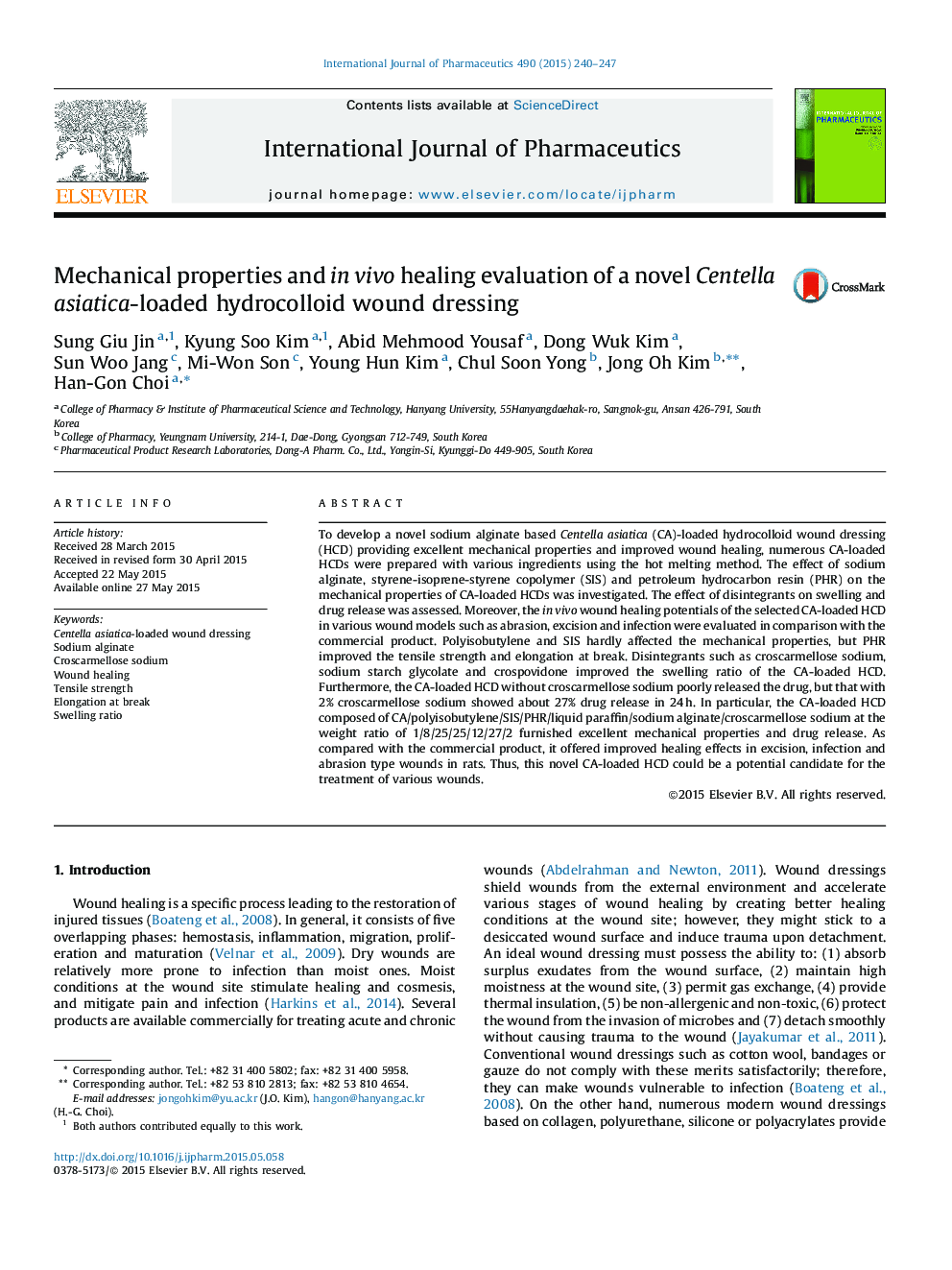| Article ID | Journal | Published Year | Pages | File Type |
|---|---|---|---|---|
| 2501309 | International Journal of Pharmaceutics | 2015 | 8 Pages |
To develop a novel sodium alginate based Centella asiatica (CA)-loaded hydrocolloid wound dressing (HCD) providing excellent mechanical properties and improved wound healing, numerous CA-loaded HCDs were prepared with various ingredients using the hot melting method. The effect of sodium alginate, styrene-isoprene-styrene copolymer (SIS) and petroleum hydrocarbon resin (PHR) on the mechanical properties of CA-loaded HCDs was investigated. The effect of disintegrants on swelling and drug release was assessed. Moreover, the in vivo wound healing potentials of the selected CA-loaded HCD in various wound models such as abrasion, excision and infection were evaluated in comparison with the commercial product. Polyisobutylene and SIS hardly affected the mechanical properties, but PHR improved the tensile strength and elongation at break. Disintegrants such as croscarmellose sodium, sodium starch glycolate and crospovidone improved the swelling ratio of the CA-loaded HCD. Furthermore, the CA-loaded HCD without croscarmellose sodium poorly released the drug, but that with 2% croscarmellose sodium showed about 27% drug release in 24 h. In particular, the CA-loaded HCD composed of CA/polyisobutylene/SIS/PHR/liquid paraffin/sodium alginate/croscarmellose sodium at the weight ratio of 1/8/25/25/12/27/2 furnished excellent mechanical properties and drug release. As compared with the commercial product, it offered improved healing effects in excision, infection and abrasion type wounds in rats. Thus, this novel CA-loaded HCD could be a potential candidate for the treatment of various wounds.
Graphical abstractFigure optionsDownload full-size imageDownload high-quality image (235 K)Download as PowerPoint slide
